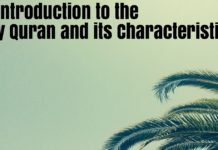John Keats Style And Diction In Poetry
John Keats Style And Diction In Poetry he was a cognizant craftsman and his verse, aside from its different characteristics, is set apart by its masterful workmanship. He composed quickly, and a large number of his most joyful expressions came to him in the flush of motivation; still, he deliberately evaluated his work and made changes, where important, to give his origination the ideal shape. “Keats’ sureness of touch in the amendments of his stanza uncovers an uncommon feeling of the quintessential artist.”.Though verse fell into place without a hitch and unexpectedly to him “as leaves to a tree”, he felt that wonderful organization required application, study, and thought, and concerning numerous sections of his works he went to considerable lengths is shape his refrain. John Keats’s Style And Diction In Poetry is not able to forget.

Advancement of Keats’ craft
Table of Contents
The craft of Keats grew rapidly from the adolescence of Endymion to the completed greatness of the Odes; this fast improvement was guided by his definite idyllic and imaginative impulse. Endymion, regardless of its honorable sections, “speaks to the mistake of an unrestrained virtuoso.” The writer (says Cazamian) is amazed by his own passion, and diffuses his consideration over simple subtleties, without thinking about a feeling of the entirety. Endymion shows the early youthfulness of Keats’ craft, however there transmits out of it a veritable wonderful eagerness. Its style is regularly fake; it is stacked with expanded adornments and shows over-refinement of abundance. This extravagance of extravagance, carrying with it vulnerability of touch, didn’t keep going long. A portion of the poems, which followed Endymion, uncover the artist’s limitation. The long sonnet, Lamia however not liberated from the early blames, speaks to a stamped advancement in the artist’s specialty.
At that point came two of his works of art—The Eve of St. Agnes and Isabella. Here furthermore we find also, ornamentation in The Eve of St.Agnes, and blemished mixing of different components in the feeling of Isabel best of Keats’ verse, with its sureness of imaginative to be found in the Odes, in La Belle Dame Sans Merci, in the primary adaptation of Hyperion, and in a portion of his pieces. Here we discover the restriction and control of classical joined with the zest and immediacy of sentimentalism “Nothing could be all the more genuinely Romantic,” says Cazam “nor could the very figure of olden times be enlivened with more solid life” than the Odes of Keats.“
Pictorial craftsmanship
The most trademark nature of Keats’ idyllic workmanship is the capacity to paint pictures by methods of words. His sonnets might be said to have been painted with words. His words and designations call up distinctive pictures to the mid: “beaded air pockets winking at the edge; torment wet; full throated simplicity; delicate cinched quieted cool-established blossoms fragrant peered toward.” The theoretical thoughts in Keats’ verse expect a solid, mortal structure, for example, he gives a solid living picture to communicate the possibility of natural happiness which is transient;
Happiness whose hand is.ever at his lips
Saying farewell.
He depicts harvest time as an individual:
Sitting indiscreet on a storage facility floor,
Her hair delicate lifted by the winnowing wind,
Or then again on a half harvested wrinkle sound sleeping
Drowsed with the smoke of poppies, while her snare
Extras the following area and all its twined blossoms.
The wonderful proportional for a feeling with Keats is ordinarily an image; he barely communicates an idea or feeling in dynamic terms; his idea jumps into visual structures. The offspring of winter is accordingly communicated by methods for pleasant pictures:
St. Agnes’ Eve-Ah, harsh chill it was:
The Owl, for every one of his plumes was a virus,
The bunny limp’d shuddering through the solidified grass
Furthermore, quiet was the group in wooly overlay
Inventive expressions
John Keats Style And Diction In Poetry he had the endowment of settling on what Bridges decisions “Inventive expressions.” This blessing is genuine of his lovely bit-right. It is undoubtedly an uncommon force, had distinctly by the best writer; it is the intensity of concentrating all the assets of language on one point and consequently delivering a glad articulation which fulfills the stylish creative mind as well as shocks the insight with another part of the truth. It is for the ownership of this force Keats has been compared to Shakespeare, for Shakespeare is of all writers its best ace. In Keats we find “inventive expressions”, which have the ability to charm the stylish sense and furthermore shock the acumen by their fitness;
“The joumey toward home to ongoing self’.
“My rest had been weaved with dreams”
“These green-robed representatives of powerful woods,
Tall Oaks”.
Keats was an admirer of fine expressions, and his verse is loaded with phrases that frequent the creative mind by reason of their fitness, intensity of recommendation, and music. These expressions are so numerous brilliant diamonds that radiance out of sight of the flawless stanza;
Utilization of shading
“Keats,” says Hewlett, “not just recuperated in verse the nearly overlooked quality of shading, yet utilized it as an ace skilled worker.” He utilized various types of hues with mind-blowing impact in The Eve of St. Agnes. Old Angela takes Porphyry to “a little evening glow room” and afterward comes the primary note of solid shading:
Abrupt an idea came like an out and out rose
Flushing his temple, and in his tormented heart
Made purple mob.
The sonnet breaks into rich hues when the office of Madeline is depicted:
Full on the casement shone the frigid moon ;
Also, tossed warm gules on Madeline’s bosom
As down he bowed for paradise’s effortlessness and aid:
Rose bloom fell on her hands, together orect
Also, on her Silver cross delicate amethyst
Also, on her hair a greatness, similar to a holy person.
The shade of affection is proposed carefully in the strap Madeline:
Blinded the same from daylight and from downpour
Like a rose should close and be a bud once more.
It is on The Eve of St. Agnes that Keats openly utilized wonderful hues to uplift the impact of sentiment. The anthem of Belle Dame Sans Merci gives a differentiation. Here we have the whiteness of lily on the temple of the heartbreaking knight and the rose on his cheeks is additionally wilting ceaselessly. Instead of the rich shade of The Eve of St. Agnes, we have in La Belle the parlor of disorder and demise:
“I saw pale rulers and rulers too,
Pale warriors,
Additionally, no flying animals sing”
Music of Keats’ refrain
Keats was an insightful skilled worker in the matter of making melodic effects in his abstain. He intentionally utilized language as Spenser, the Elizabethan writers, and Milton had utilized it, utilizing every one of its assets to make his stanza melodic. He as often as possible uses similar sounding word usage, however, it is utilized with the definite civility of a craftsman, so it adds to the music of his refrain: “the marble men and ladies”, “the winnowing twist Fast blurring violets concealed in leaves”. In his Odes, vowels are masterfully masterminded so they don’t conflict with each other; they bear the weight of the song and are traded, similar to the various notes of music, to precook dullness. Many are the gadgets utilized by the sonnet make his refrain melodic one-of the in being to make the sound reverberation the sense. The most momentous model in Keats of sound repeating the sense is to be found in the line:
The various frequent of flies on summer eves.
In the line
Thou watches the last vozings, step by step.
Keats’ wonderful workmanship at its best in the Odes
It is impossible to miss the greatness of Keats’s beautiful workmanship comprised in his unfailing feeling of extent and equalization. The fundamental issue of Endymion is the nonappearance of this quality; in the Odes, this issue is totally wiped out; in reality, Odes show Keats idyllic craftsmanship at its best, with their parity, economy, enthusiastic force, and consistent advancement of thought. The Ode to Nightingale begins with the writer’s serious feeling of bliss created by the tune of the flying creature. He yearns to leave this universe of difficult real factors and fly to the universe of the songbird.
Yet, how? He first thinks about a draft of vintage, rejects it and utilizations the viewless wings of poesy to travel to the captivating universe of the nightingale. He is so exceptionally upbeat that he might not want to return to the universe of real factors. He thinks it “rich” to pass on right now, hearing the melody of the fledgling. The melody of the fledgling uncovers to him for a second the unending length of time of magnificence, however this vision doesn’t last-he returns to his “sole self’. The dynamic advancement of thought is a checked element of the sonnet.
There is here flawless agreement and equalization: “everything here coordinates to charm an arousing and fantastic thought the blueprints, the shading, the feeling, and the song”. Also, says Cambrian, the most unique character of idyllic workmanship showed in the best Odes is its thickness; every sobriquet is uncommonly wealthy in a recommendation. Every one of the pictures which have been painstakingly chosen opens up to our view a broad viewpoint. In these sonnets of his development, the language shines with all the diamonds of discourse, and the rhythms are completely adjusted to the solidarity of impression.
John Keats Attitude Towards Nature

























